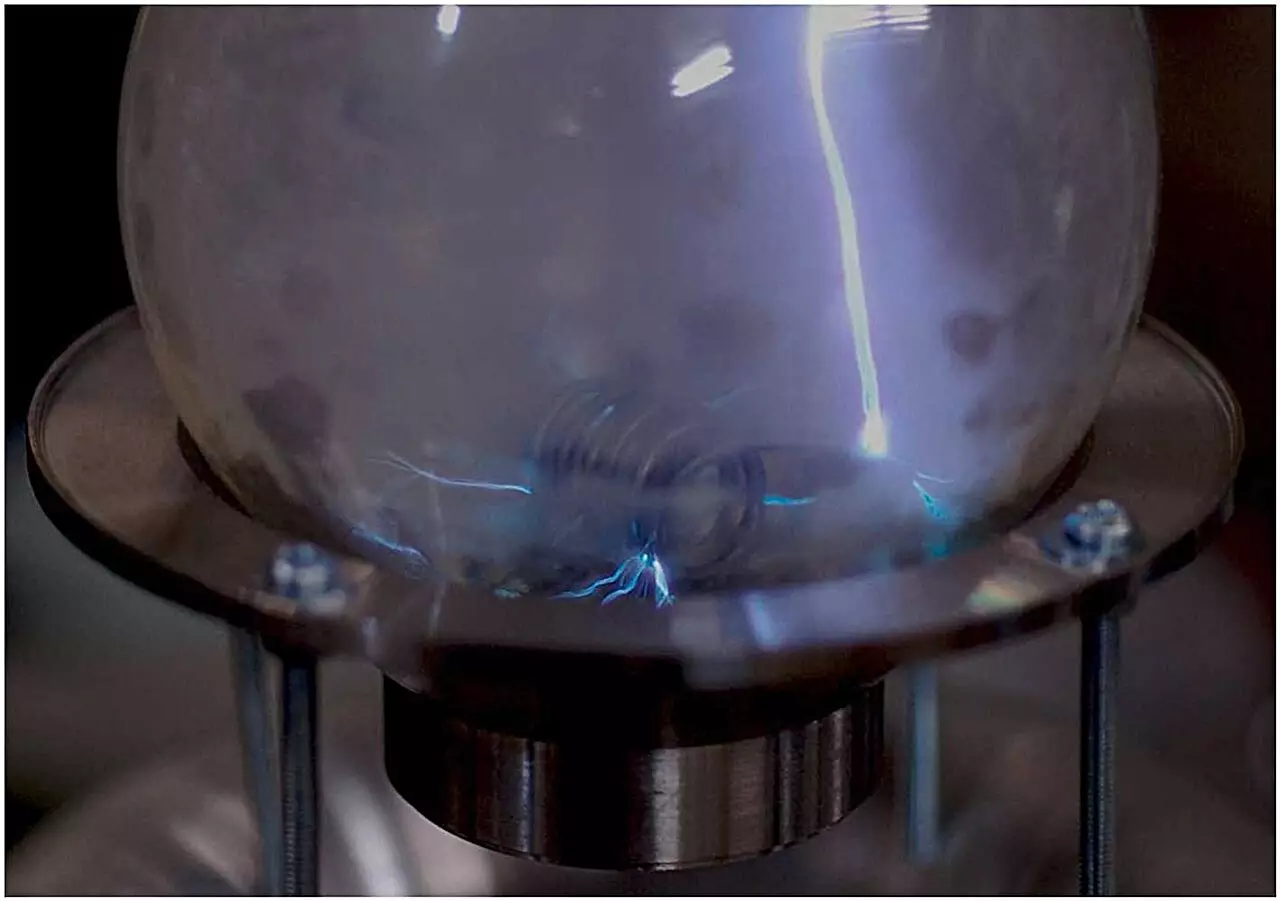The field of synthetic polymer chemistry has witnessed a groundbreaking development thanks to researchers at the University of Tsukuba. Their innovative approach leverages a Tesla coil, a high-voltage, high-frequency generator, to initiate polymerization reactions without traditional catalysts or initiators. This advancement not only streamlines the process but also enhances the purity and efficiency of synthesizing widely used polymers like polystyrene and acrylic resins. The findings published in the journal Next Materials signify a potential paradigm shift in the production of various essential plastic products.
At the core of this new methodology is the use of remote spark discharge generated by the Tesla coil. This technology creates monomer radicals via an electrical discharge, which serves as initiators for the polymerization process. One of the most remarkable features of this technique is its ability to conduct the spark discharge externally to the reaction vessel. Traditionally, polymer synthesis relies heavily on metal catalysts that can introduce contaminants or limiting factors in the reaction environment. By eliminating the need for these components, the researchers have optimized the technique to yield polymers of superior purity, fundamentally enhancing their applicability in sensitive domains like food packaging.
Polymers synthesized using the radical polymerization method pioneered by this team open up a vast realm of possibilities in manufacturing. The use of polystyrene and polymethyl methacrylate is prevalent in various products, such as food containers and thermal cases, emphasizing the importance of safety and quality in their production. The introduction of high-purity materials ensures that these products meet stringent regulatory standards, thereby mitigating potential health risks associated with contaminants that may arise from traditional synthesis methods.
Interestingly, the researchers did not stop at conventional polymers. They further explored the potential of this spark discharge treatment on conjugated polymers, utilizing solitons—displacement waves generated during the spark discharge—as initiators. This pioneering strategy is unprecedented in the realm of synthetic polymer chemistry, suggesting that the applications could extend far beyond current limitations. It raises the possibility of tailoring polymer properties for advanced applications in electronics, nanotechnology, and beyond.
The work of the University of Tsukuba researchers represents a significant leap forward in polymer synthesis, signaling a move away from traditional, often cumbersome methods that require potentially hazardous catalysts. By embracing innovative technologies such as the Tesla coil’s spark discharge, they not only enhance the purity of the polymers produced but also broaden the scope of materials attainable through novel radical polymerization techniques. As the field of synthetic polymer chemistry continues to evolve, this breakthrough is poised to inspire further research and development, ultimately paving the way for safer, more efficient material production methods across various industries. The future of polymer development beckons, promising cleaner and more sustainable scientific practices.


Leave a Reply